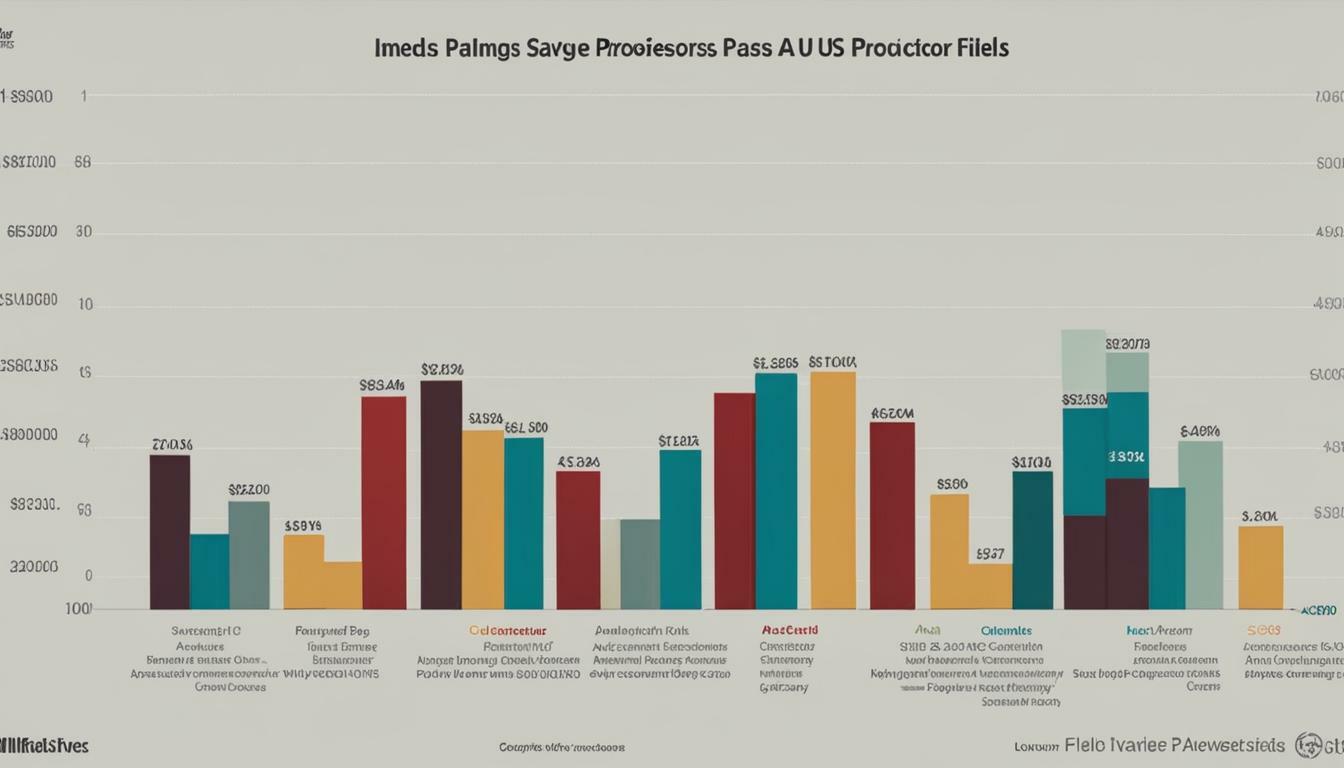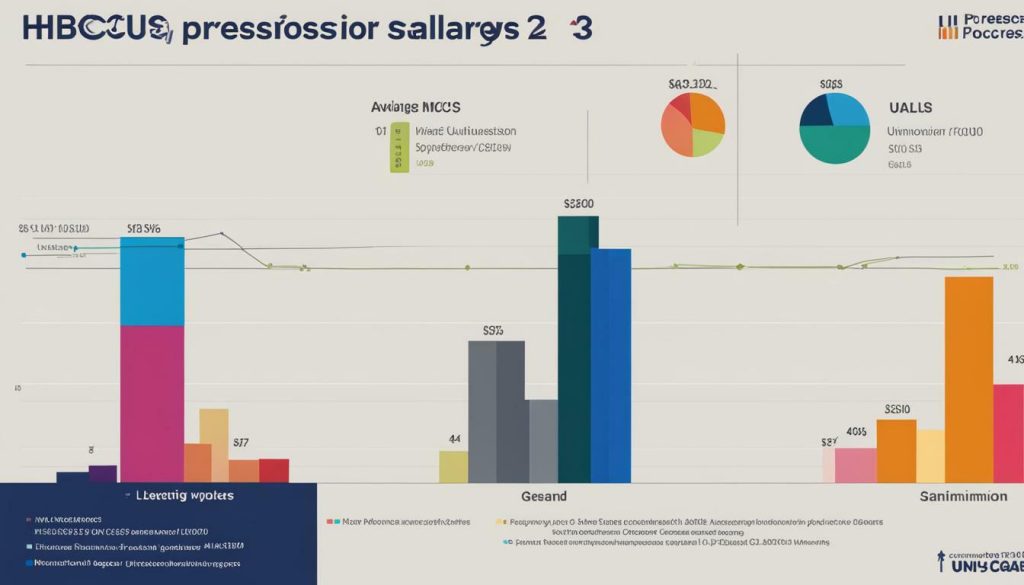
Professor salary is a crucial aspect of the academic field in the United States, and understanding the intricacies of compensation is essential for both aspiring and current professors. In this article, we will delve into the details of professor salaries in the US, exploring average salaries, trends, factors affecting pay, inequities, and the challenges faced by adjunct and part-time faculty.
- Unions play a significant role in improving professor salaries, with faculty who have collective bargaining power earning more.
- Inequities exist, with faculty at historically Black colleges and universities (HBCUs) and women faculty earning less.
- Inflation negatively impacts faculty salaries, leading to a loss of purchasing power over the years.
- The type of institution and subject taught also affect salaries, with health and science faculty earning the most and education and library science professors earning the least.
- The average salary for a full college professor in the US was $149,629 in 2022-23.
- Adjunct and non-tenured faculty earn considerably less, and the majority of college professors today are adjuncts.
- Part-time faculty members earn an average of $3,556 per course, with limited access to benefits.
Understanding the Average Professor Salary and Trends
The average salary for a full college professor in the US was $149,629 in the 2022-23 academic year, providing a benchmark for understanding professor compensation in the country. This figure takes into account factors such as experience, academic qualifications, and institution type. While this average salary can vary depending on various factors, it gives us a general idea of the compensation levels for college professors in the US.
When examining professor salary trends, it’s important to note that faculty salaries have been influenced by a multitude of factors over the years. For example, the 2023 NEA Higher Education Faculty Salary Analysis highlights the impact of unions on professor pay. Faculty who have the power to collectively bargain through unions tend to earn more than their peers who do not have this advantage. According to the report, faculty at public institutions with union representation earn about 15% more than those without.

Inequities also exist in professor salaries, with historical disparities among faculty at Historically Black Colleges and Universities (HBCUs) and gender pay gaps. The NEA report reveals that faculty at HBCUs earn significantly less than their colleagues at non-HBCUs. This disparity highlights the need for greater focus on equitable compensation practices to ensure fair salaries for all faculty members regardless of the institution they work for or their demographic background.
Furthermore, inflation has had a negative impact on professor salaries, leading to a loss of purchasing power over the years. This is particularly important to consider when evaluating long-term compensation trends for faculty members. Additionally, there are variations in salaries depending on the subject taught and the type of institution. Health and science faculty tend to earn more, while education and library science professors earn less on average.
The Influence of Union Representation on Professor Salaries
The 2023 NEA Higher Education Faculty Salary Analysis highlights persistent inequities in faculty pay. The report shows that unions play a significant role in improving salaries, with faculty at public institutions with union representation earning about 15% more than those without.
In summary, understanding the average professor salary and trends provides valuable insights into the compensation landscape for college professors in the US. It is essential to address inequities, such as those present at HBCUs and the gender pay gap, and to consider the impact of inflation on long-term salary growth. Moreover, the presence of unions has proven to be influential in improving salaries for faculty members, emphasizing the importance of collective bargaining power in ensuring fair compensation. By evaluating these factors, we can strive towards a more equitable and transparent pay structure for college professors in the US.
Factors Affecting Professor Salary: Institution Type and Subject Taught
The type of institution and subject taught play a significant role in determining professor salaries, with health and science faculty typically earning more than education and library science professors. According to a 2023 NEA Higher Education Faculty Salary Analysis, faculty at public institutions with union representation earn about 15% more than those without. This highlights the impact of unions in improving salaries for professors in the US.
The report also reveals the pay disparities experienced by faculty at historically Black colleges and universities (HBCUs). In comparison to their colleagues at non-HBCUs, faculty at HBCUs earn significantly less. This is a concerning inequity that needs to be addressed to ensure fair compensation for all faculty members.
When considering the subject taught, it is evident that health and science faculties command higher salaries. This can be attributed to the demand for expertise in these fields and the limited pool of qualified candidates. On the other hand, education and library science professors tend to earn less due to the perception that these disciplines have a lower earning potential.
Salary Comparison by Institution Type and Subject Taught
| Institution Type | Subject Taught | Average Salary |
|---|---|---|
| Public | Health and Science | $170,000 |
| Education and Library Science | $120,000 | |
| Private | Health and Science | $180,000 |
| Education and Library Science | $130,000 |
These figures provide a general overview of the salary differences across institution types and subjects taught. It is important to note that individual universities may have variations within these ranges. Additionally, factors such as experience, qualifications, and geographic location can also influence professor salaries.
Understanding the factors that impact professor salaries is crucial for both academics and policy makers. By addressing the existing inequities and supporting fair compensation practices, we can ensure that professors are properly rewarded for their expertise and contributions to education.
Inequities in Professor Salary: Unions, HBCUs, and Gender Disparities
Inequities exist within professor salaries in the US, with unions, Historically Black colleges and universities (HBCUs), and gender disparities all playing a significant role in determining compensation. According to the 2023 NEA Higher Education Faculty Salary Analysis, these inequities persist despite efforts to address them.
The report highlights the positive impact of unions on professor salaries, revealing that faculty at public institutions with union representation earn approximately 15% more than those without. This union advantage demonstrates the power of collective bargaining in improving compensation for faculty members. However, the report also uncovers a pay penalty faced by faculty at HBCUs, who earn significantly less than their colleagues at non-HBCUs. This disparity emphasizes the need for further examination and action to address salary inequities within the education system.
In addition to the union advantage and HBCU pay disparities, gender also plays a role in determining professor salaries. The report reveals that women faculty continue to face pay disparities, particularly in education departments. This gender wage gap highlights the ongoing challenges and biases that women experience within higher education.
Impact of Inflation on Professor Salaries and Subject Influence
While unions, HBCUs, and gender disparities contribute to salary inequities, it’s crucial to consider the impact of inflation on professor salaries as well. Over the years, inflation has eroded the purchasing power of faculty salaries, leaving many struggling to keep up with the rising cost of living. As a result, faculty members may experience financial constraints that hinder their professional and personal lives.
Furthermore, the type of institution and the subject taught also play a significant role in determining professor salaries. Health and science faculty tend to earn the highest salaries, reflecting the demand and market value for these disciplines. On the other hand, education and library science professors often earn the least, despite their vital contributions to academia.
In conclusion, addressing the inequities within professor salaries requires a comprehensive approach that considers the influence of unions, the disparities faced by HBCUs, and the persistent gender wage gap. Moreover, understanding the impact of inflation and recognizing the variation in salaries across different subjects and institution types is essential for achieving fair compensation in the academic field.

Inflation has negatively impacted professor salaries, leading to a reduction in purchasing power and a need for constant evaluation of compensation. As the cost of living continues to rise, it is essential to assess the salary scales of professors to ensure fair and equitable compensation.
According to the 2023 NEA Higher Education Faculty Salary Analysis, inflation has eroded the value of professor salaries over the years. With the rising cost of housing, education, and healthcare, faculty members are finding it increasingly difficult to make ends meet. This not only affects their quality of life but also their motivation and job satisfaction.
The table below highlights the impact of inflation on professor salaries:
| Year | Inflation Rate | Salary Increase |
|---|---|---|
| 2015 | 1.5% | 2.0% |
| 2016 | 2.1% | 2.5% |
| 2017 | 2.4% | 2.2% |
| 2018 | 2.1% | 2.8% |
It is evident from the table that the salary increases for professors have not kept pace with inflation. While salary increases may seem substantial on the surface, they fail to provide sufficient compensation to match the rising cost of living.
Addressing the issue of inflation requires a comprehensive approach. Institutions and governing bodies must prioritize regular evaluations of professor salaries, considering both market factors and inflation rates. This will help ensure that the compensation offered to professors remains competitive and reflective of their contributions to academia.

The Plight of Adjunct Professors and Part-Time Faculty
Adjunct and part-time faculty members form a significant portion of the academic workforce, yet their salaries are typically lower, with limited access to benefits and job security.
The 2023 NEA Higher Education Faculty Salary Analysis highlights the persistent inequities in faculty pay, shedding light on the challenges faced by adjuncts and part-time faculty. According to the report, the average salary for a full college professor in the US was $149,629 in the academic year 2022-23. However, adjunct and non-tenured faculty earn considerably less, often struggling to make ends meet on their meager salaries.
On average, part-time faculty members earn around $3,556 per course, which is significantly lower than the salaries of their full-time counterparts. Additionally, they have limited access to benefits such as health insurance, retirement plans, and job security. Many adjuncts rely solely on their income from teaching, often juggling multiple jobs to make a living.
This disparity in pay and benefits can have a detrimental impact on the quality of education provided to students. With adjunct and part-time faculty members facing financial insecurity and lack of stability in their positions, it becomes challenging for them to devote adequate time and resources to teaching and mentoring students. As a result, the overall educational experience may suffer.
FAQ
What is the average salary for college professors in the US?
The average salary for a full college professor in the US was $149,629 in 2022-23.
Do adjunct and non-tenured faculty earn less than full-time professors?
Yes, adjunct and non-tenured faculty members earn considerably less than full-time professors.
How much do part-time faculty members earn per course?
On average, part-time faculty members earn $3,556 per course, which is significantly less than full-time professors.
What role do unions play in improving professor salaries?
Unions play a significant role in improving salaries, with faculty at public institutions with union representation earning about 15% more than those without.
Are there discrepancies in professor salaries among Historically Black Colleges and Universities (HBCUs) and non-HBCUs?
Yes, faculty at HBCUs earn significantly less than their colleagues at non-HBCUs, highlighting a pay penalty faced by HBCU professors.
Do women faculty face pay disparities in professor salaries?
Yes, women faculty, especially in education departments, continue to face pay disparities in professor salaries.
How does inflation impact professor salaries?
Inflation negatively impacts professor salaries, leading to a loss of purchasing power over the years.
What factors affect professor salaries in the US?
The type of institution and subject taught play a significant role in professor salaries, with health and science faculty earning the most and education and library science professors earning the least.
Are there benefits available to adjunct faculty members?
Adjunct faculty members often have limited access to benefits and may rely exclusively on their income from teaching, which tends to be low.



